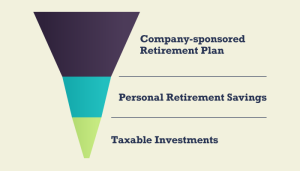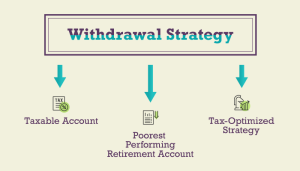Explore how the One Big Beautiful Bill may affect taxes, deductions, and credits now and in the years ahead.
On July 4, the One Big Beautiful Bill was signed into law at a White House ceremony. This domestic policy bill extends the 2017 tax cuts set to expire this year, making some of those rules permanent. The bill also creates several new tax laws for individuals while addressing other tax issues for businesses.1,2
It might be a good time to check with your tax, legal, or accounting professional about the changes in the law. Some will start this year, while other changes will kick in in 2026. Like previous tax laws, some new rules are scheduled to expire, while others are permanent. Here’s a look at changes expected to impact most tax filers shortly.
Taxes
One key feature of the One Big Beautiful Bill Act is the extension and revision of some of the tax laws that were part of the 2017 Tax Cuts and Jobs Act (TCJA). Here’s a quick summary of the three changes we found the most interesting:
Extension of Tax Rates
The bill extends the current tax rates of the 12 percent, 22 percent, 24 percent, 32 percent, and 37 percent brackets, respectively. Had the TCJA expired, the rates would have reverted to 15, 25, 28, 33, and 39.6 percent. The sixth tax bracket stayed the same at a 35 percent tax rate.1,2
Standard Deduction
It also increased the standard deduction to $15,750 for single filers and $31,500 for those filing jointly for 2025. Both are slightly rising from the current rate. Note: The standard deduction will adjust for inflation starting next year.1,2
State and Local Tax Deduction (SALT)
The SALT will increase to $40,000 in 2025 and will increase 1 percent annually until 2030. However, in 2030, it will revert to $10,000. Note: SALT has a $500,000 threshold for single and married filers.1,2
The “Bonus” Deduction
The new “bonus” deduction for older Americans has received much attention since the One Big Beautiful Bill Act became law on July 4. Here’s what’s changing for seniors with the new bill. Starting in 2025, the bill provides a $6,000 bonus deduction for filers 65 and up in addition to the standard deduction available to all taxpayers. The new rule will also affect unmarried/non-surviving spouses. The deduction begins to phase out for individuals with incomes starting at $75,000, or joint filers with an income of $150,000. It phases out completely for individuals earning more than $175,000 and couples earning $250,000. Note: The bonus deduction ends in 2028.1,2
Child Tax Credit
Starting in 2025, the child tax credit of $2,000 will increase to $2,200. The credit also has a COLA (cost-of-living adjustment) attached.1,2
Dependent Care
The bill, which will take effect in 2026, increases the dependent care flexible spending account limit from $5,000 to $7,500. It also raises the maximum percentage of qualified expenses for dependent care from 35 percent to 50 percent.1,2
American Family Account
The government will make a one-time $1,000 payment into an account for babies born between 2025 and 2028. Note: Parents can add up to $5,000/year. No withdrawals are allowed before age 18.1,2
529 Expansion
The bill extends the 529 umbrella to cover nontuition expenses related to elementary or secondary school attendance. In addition, starting in 2026, the cap for tuition-related expenses increases from $10,000 to $20,000.1,2
New Car Loans
Between 2025 and 2028, a $10,000 deduction on new car loan interest will be available, but some limitations will apply (such as the car needing to be brand-new). First, the deduction will be reduced if your gross income exceeds $100,000, or $200,000 if you are married. The car’s final assembly must occur in the U.S. to qualify for the deduction.1,2
Electric Vehicle (EV) Subsidies
Some home improvements (such as windows) and residential energy credits (adding solar) end after December 31, 2025. EV credits for new and used cars end after September 30, 2025.1,2
Small Business Deductions
The new law permanently establishes a deduction of up to 20 percent of qualified business income for sole proprietorships, partnerships, and S-corps.1,2
100 Percent Expensing of Capital and Factory Investments
The bill restores the provision that allows businesses to expense 100 percent of capital investments made on or after January 19, 2025. However, some limitations may apply.1,2
1099-K
The new law sets the reporting limits at $20,000 and 200 transactions for transactions on cash apps. Note: The rule starts in 2025. It rolls back the $600 threshold set in previous legislation.1,2
No Tax on Tips
A new $25,000 deduction for tips starting in 2025 and ending in 2028 is part of the new law. The deduction is reduced if your gross income exceeds $150,000, or $300,000 if you are married and filing jointly. Note: The tax on tips provision is allowed, even if you take the standard deduction.1,2
No Tax on Overtime
New overtime deductions were created, starting in 2025 and ending in 2028. These comprise a $12,500 deduction (single filers) and a $25,000 deduction (married filing jointly). Note: Like no tax on tips, the deduction reduces if your gross income exceeds $150,000, or $300,000 if married filing jointly.1,2
Charitable Contribution Recordkeeping
Charitable contributions of $1,000 for individual filers and $2,000 for married couples filing jointly are now deductible, even if you don’t itemize your deductions.1,2
Estate and Gift Tax Exemption
The bill increases the estate and gift tax exemption starting in 2026. This year, it is capped at $13.99 million for single filers and $27.98 million for married filing jointly. In 2026, it will increase to $15 million for single filers and $30 million for married filing jointly. Note: The exemption will increase with inflation.1,2
A Note on Estate Management
Ever since the Tax Cuts and Jobs Act of 2017, there has been an ongoing concern that the estate and gift tax exemption would revert to the 2017 level in 2025. Although the new bill extends the rule, it may change again sometime in the future. Often, the best approach to estate management is proactive.1,2
The new bill has added complexity to the tax code, so I anticipate the IRS will issue guidelines for interpreting the updated rules later this year. Please reach out if you have any questions, and I’ll pass along any information I might have. I would also encourage you to speak with your tax, legal, or accounting professional before making any adjustments based on tax updates in the One Big Beautiful Bill.


